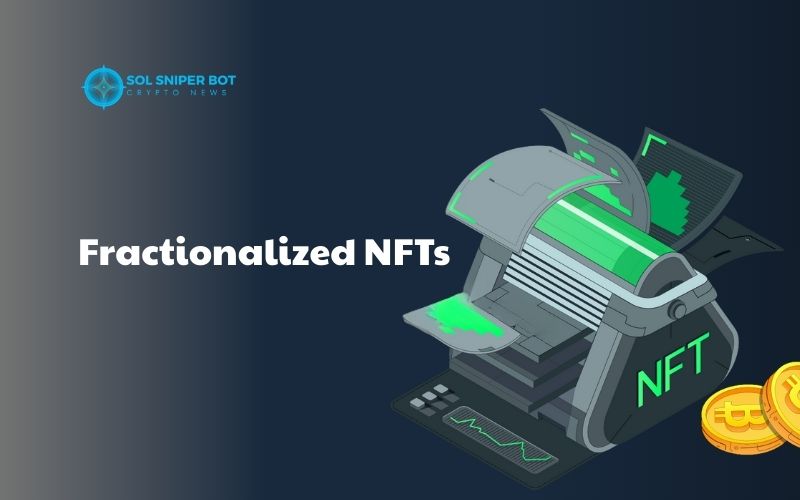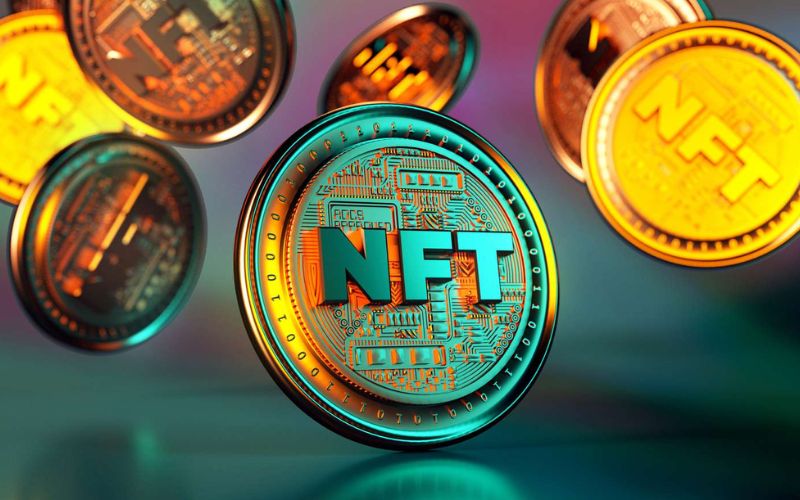In the era of rapid blockchain development, fractionalized NFTs have emerged as an innovative solution, making it easier for people to access high value digital assets. If you’re looking for a new, flexible and promising investment opportunity, let’s dive into the details in the article below.
Contents
What does fractionalized NFTs mean?

Fractionalized NFTs are NFTs that are divided into smaller fractions, allowing multiple investors to own a portion of the digital asset. Instead of purchasing the entire NFT, which may be highly expensive, such as a digital artwork or a rare virtual asset, investors can buy a small share of it through representative tokens. This makes high-value digital assets more accessible to a wider range of investors, regardless of their financial capacity. Each fraction is recorded on the blockchain, ensuring transparency and clear ownership rights for each holder.
This innovative approach not only lowers the entry barrier for investment but also increases liquidity in the NFT market. Investors can buy, sell, or trade their fractionalized portions, benefiting from the asset’s value without needing to own the entire piece. With blockchain technology ensuring the security and integrity of each transaction, NFTs are transforming the way digital assets are bought, sold, and shared. This opens up new possibilities for both seasoned investors and newcomers looking to explore the NFT space.
Why are fractionalized NFTs attracting crypto traders?
Fractionalized NFTs have captured the attention of crypto traders thanks to their ability to lower financial barriers when accessing high-value digital assets. In the past, owning an expensive NFT was out of reach for many. Now, with just a small amount of capital, anyone can invest in a portion of a digital asset. This makes the NFT market more open and equitable for all participants.
Another appealing aspect is increased liquidity. When assets are divided into smaller portions, they can be easily traded on decentralized platforms, making the buying and selling process more flexible. Investors no longer have to wait for a full buyer but can trade individual shares based on demand. This is especially valuable in the fast moving world of crypto.
Moreover, traders can effortlessly build a diversified investment portfolio. Instead of committing all funds to one asset, they can spread their capital across various sectors such as digital art, virtual real estate, or in game items. This reduces risk while enhancing the potential for profit across different market trends. Such a strategy suits both beginners and experienced investors.
With blockchain technology as its foundation, all transactions and ownership records are transparently and immutably stored. Smart contracts govern the process of fractionalization and trading, significantly minimizing the risk of fraud. As a result, investors can feel more secure when entering the market. Fractionalized NFTs are not only attractive but also a reliable path in the future of digital finance.
How do fractionalized NFTs work?
Fractionalized NFTs operate based on blockchain technology and smart contracts to divide the ownership of a single NFT into multiple smaller parts. Each part is represented by a specific type of token, commonly known as a fractional token. Users can buy, sell, trade, or hold these tokens just like any other digital asset. The entire process is transparently and immutably recorded on the blockchain.
The process typically includes the following steps:
Mint the original NFT: First, a unique NFT representing a high-value digital asset (e.g., digital artwork or virtual real estate) is created and stored on the blockchain.
- Lock the original NFT in a smart contract: The NFT is sent to a smart contract, ensuring it cannot be directly traded while it is being fractionalized.
- Generate fractional tokens: The smart contract divides ownership of the NFT into many smaller parts and issues corresponding tokens to represent each portion.
- Trade the fractional tokens: Users can buy or sell these tokens on decentralized exchanges (DEXs) or platforms that support fractionalized NFTs.
- Redeem the original NFT (optional): In some systems, if a user holds 100% of the fractional tokens, they can return them to the smart contract and reclaim the full original NFT.
The use of smart contracts ensures the process is transparent, automated, and free from third-party interference. As a result, NFTs not only democratize access to digital asset investment but also provide a secure and efficient experience within the Web3 ecosystem.
Where are fractionalized NFTs being applied?

Fractionalized NFTs are being applied in various sectors, with digital art being one of the most prominent. Famous artworks are divided into smaller parts, allowing more people to own a share and benefit from the potential growth in value. This approach not only broadens investment opportunities but also fosters a sense of community among collectors and investors. The shared ownership model is revolutionizing how digital art is bought, sold, and appreciated.
In the metaverse, virtual real estate such as land and buildings is being divided into smaller units, creating investment opportunities for a broader range of people. Instead of needing significant capital to own an entire property, users can now purchase a fraction and share ownership. This concept has been widely adopted by several metaverse projects, increasing liquidity and driving the growth of virtual economies. It is becoming a key component in the expansion of digital worlds.
Additionally, NFTs are being used to provide access to exclusive events or premium services. This allows users to buy portions of event tickets or memberships, making high end experiences more accessible to a larger audience. It creates a new way for people to participate in experiences that were previously reserved for a select few, demonstrating the flexibility and potential of this technology in various industries.
How to get started with fractionalized NFTs?
To get started with fractionalized NFTs, the first step is to set up a cryptocurrency wallet to store and manage your assets. This wallet will enable you to perform transactions on the blockchain, where ownership and transactions are recorded securely. You’ll also need to select a platform that supports fractionalized NFT trading, such as decentralized exchanges (DEX) or specialized platforms like Fractional.art. Understanding the features of the wallet and platform is essential for executing safe transactions.
After setting up your wallet and platform, it’s important to research NFT to find the assets that fit your investment goals. Examples of these assets include digital art, virtual real estate, and in game items. Take the time to understand the value of the underlying asset and the portions you would own, as this will help assess the growth potential and make better investment decisions.
Once you have selected the NFT that interest you, you can proceed to make transactions through your cryptocurrency wallet. Smart contracts will ensure that ownership is recorded and manage the transactions, ensuring transparency and automation throughout the process. As with any form of investment, always be cautious and only invest what you can afford to lose, as the market can be volatile.
In conclusion, fractionalized NFTs open up exciting opportunities for diversifying your investments and participating in the digital asset market. As the market continues to evolve, staying informed is crucial. Be sure to follow Sol Sniper Bot for updates and insights on the latest trends in NFTs and the broader crypto space.
